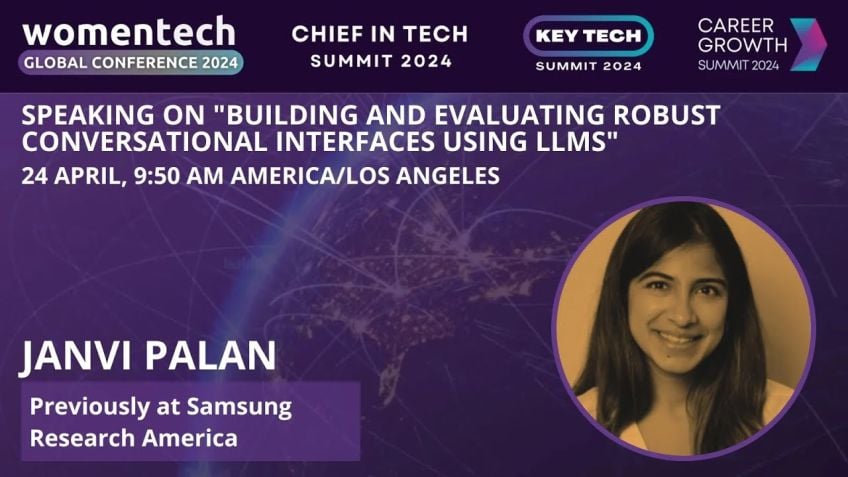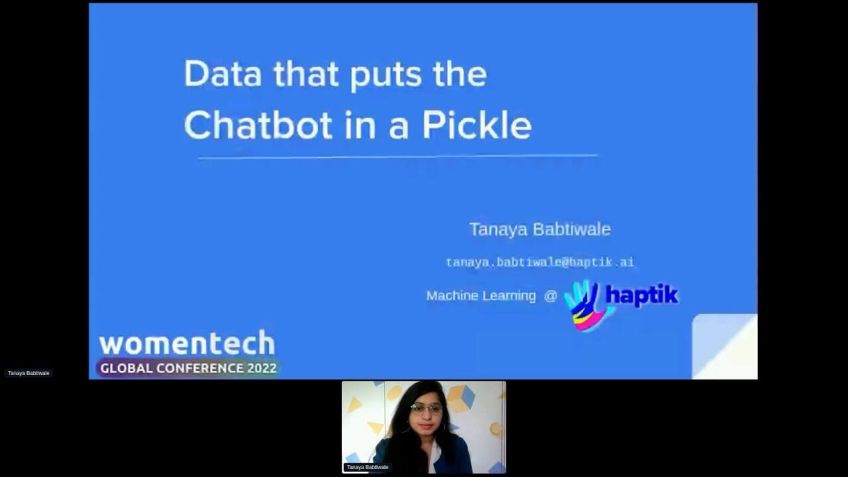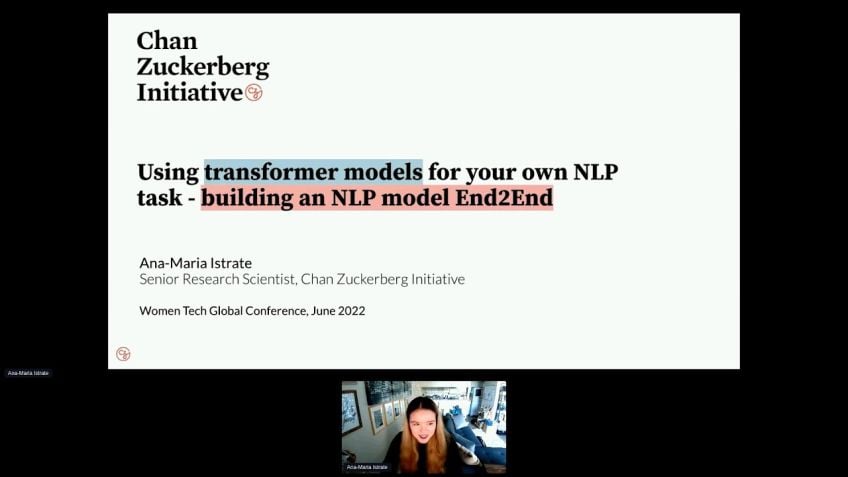Data is value, Language is Data: Language is Value
Reviews
Unlocking the Value from Language and Data
Welcome to this blog, where we unveil the fascinating world of data language, and more importantly, the value that each of these components holds. In today's digital age, data is the new oil, and here, we're going to delve into how businesses can extract value from data and language.
Meet the Expert
My name is Pamela Ngos Santi, and I serve as the head of Sector Strategy for financial services and insurance at A.E.I - a company specializing in Natural Language Understanding. My experience across various industries has allowed me to witness first-hand how data language can be a game-changer for businesses, particularly within the insurance sector.
Understanding the Challenge and Solution
The Challenge
In the modern world, language goes beyond basic communication. In reality, it forms a significant part of how businesses operate. Whether it's insurance policies, risk reports, mortgage contracts, or emails, companies encounter vast amounts of unstructured data daily. However, processing such a significant amount of language-based information is a considerable challenge for businesses.
The Solution
Thankfully, technology offers a promising solution - Natural Language Understanding (NLU). Unlike Natural Language Processing, which solely focuses on processing language data, NLU goes a step further. It strives to understand language, identify meaning, context, and intent, thereby helping businesses to automate processes.
Natural Language Understanding in Insurance
Let's dive into a real-world application taking Insurance as an example. The conventional processes in insurance involve high volume of documents and are central to operations. The challenge in insurance is the sheer volume of unstructured documents processed daily that require a thorough understanding to draw conclusions and make informed decisions.
Risk Engineering: A Case Study
One notable example of NLU application in Insurance is through a sub-process within underwriting known as Risk Engineering. Here, risk engineers manually review third party risk reports for every location, grade exposure towards specific risk factors, and assign an overall score before releasing an offer.
Applying Natural Language Understanding to this process eliminates the time-consuming manual review and grading by the risk engineer. NLU can automate reading documents, detect risk factors, grade them and provide results. It's about using technology to augment human capacity, freeing up resources for more meaningful tasks.
Benefits of Natural Language Understanding
Applying NLU offers a wide array of benefits, including:
- Operational Efficiency: Reduce processing time significantly, saving cost and resources. On average, businesses could save 50% of the time spent on reading third-party risk reports.
- Improved Customer Experience: Faster processing time results in more responsive engagement with customers and brokers, creating an attractive factor for your business.
- Growth and Market Penetration: Being fast increases the probability of winning more deals and serves more customers. Thus, increasing your market share
- Loss Avoidance: Quick and comprehensive document review with NLU allows businesses to spot potential red flags or signals that need immediate attention, avoiding potential losses.
Scaling through NLU: Best Practices
As businesses look forward to leveraging NLU, they must remember certain best practices for the maximized outcome:
- Employ a Build and Buy approach. Building internal capabilities on top of specific technologies can enhance the total cost of ownership.
- Don't just focus on near-term ROI. Endeavor to build a transformative capability for the long run.
- Move beyond experiments and remain focus on yielding real business results.
An understanding of how language becomes data, and subsequently value, could be the turning point in a company's growth trajectory. The focus should be on leveraging technology, such as natural language understanding, to augment human intelligence and consequently, business productivity.
I hope enjoyed the journey of understanding value from language and data. Feel free to connect with me on LinkedIn for further discussion on this topic. And remember, language is value, let's start doing!
Video Transcription
So welcome everyone. I hope you're enjoying the the event and are just coming out of very productive and inspiring session.My session today will be about uh data language and in particular the value that is embedded in data and also in language and how we could extract this specific specific value. Few words about myself. Um I'm Pamela Ngos Santi and I'm head of Sector Strategy for financial services and insurance at A dot E I which is a company that is specialized in natural language. Understanding I want is to be your session. So what I'm gonna share with you today is the experience we did in some specific industry. And in particular, I will take insurance as an example with some concrete uh use cases in KPI. I think it's the best way to leverage a little bit and stimulate a discussion but really feel free to ask any type of questions you might have if you have curiosity or whatever um clarification you might want to have. So no question for me is silly. There's always uh a value in question. I mentioned it before. This is the agenda for today. So first thing I will describe a little bit the challenge around language today.
What do we mean by natural language, understanding and natural language processing some concrete use cases with corresponding Kpis and your takeaways. I would like you to, to, to close the meeting with something in your pocket. That's the idea. Let me start with the challenge and by describing the challenge, I'm using some technical language. So if language is data and data is value, then language is value. And this is a strong statement and I would like to spend a few minutes in clarifying why it is a strong statement today. If we are talking about data, everyone in in her brain is thinking about structure data probably numbers. But reality is that language is really growing fast. And with language, I'm referring to all the documents we are processing every day, we are reading every day as employee as humans as a leader in our companies. So language at the end of the day is exactly a specification of data. And we all agree that data are containing value. That's you know, there has been used several metaphor like data is the new oil and similar things. So that's taken for granted. And the the the conclusion is that if data is value and language is data, then we can assume that language is value. But his value just because language powers every business.
If you are an insurance or a broker, you have to manage a lot of documents like quotes, policies, claims notes, risk reports, medical record and similar things. It doesn't matter which is the department. It could be in the underwriting in the claims in the risk management, legal and compliance. And similarly, it happens for banking, institutional financial services, mortgage contracts, email, online inquiries and sky is the limit here. Uh information providers. So think about news feed, recommendation engine, topics, pages articles.
So there's a lot of documents there same with a life science and science, theres pas clinical statement, researches to every type of business today is powered by language. But reality is that language doesn't scale and it doesn't scale because it's extremely complicated for software and technology to be able to understand language, language could be interpreted. And we are not aware as human about how complicated it is to understand language. We make it like automatically in our brain is really processing hundreds of thousands of concepts together to come to the final meeting while we are communicating. This is one of the most complicated tasks we are doing daily. But for computers and for technology, it's extremely hard to scale because there's a lot of embedded knowledge and we process a lot of documents today. There's extreme hype around the digitalization, digital transformation. But reality is that there's a lot of manual processes in all the companies and that's making also language so complicated to be skilled. But there's good news. There are some technologies that that are really approaching this complexity in a very focused and narrow way. And this is exactly what we mean by natural language understanding. I would like to introduce you a difference in terminology between natural language processing that is well known uh versus natural language understanding.
The first one is about processing data processing language, like identifying the different pieces that are creating a language. The second one is about understanding and, and that's completely different. I like to use a metaphor to let you better understand. And the metaphor is if you give a document to a person that is able to a child that is able to read, she will read it, right? But the capability to understand is completely different. So if you take uh property policy or if you take a mortgage contract and you give it to a child able to read, she will read it. But the level of understanding will be completely different. So I prefer to refer to natural language understanding because unless you really understand this type of documents, you can automate or augment anything. So that's the first um piece of information I would like to share with you. So natural language understanding is different from natural language processing.
Why natural language understanding and insurance? I'm gonna take this vertical is an example. And look, I already mentioned that um this type of technology, so Nero language understanding could be applied uh through different verticals through different industries. But insurance is a good fit.
And uh you can, you can see uh daily uh the excitement and progress that is happening around insurance and technology that's called insure tech. And there's uh really very good examples if we think about a new output that happened uh with Fox in Europe, uh both by many in the UK lemonade in the US. So this um subsegment of the market is really getting mature. And the reason is that if you think about also insurance as quite conservative domain, uh not really sharing the need to, to innovate in the past. And the fact that some start up this rapid a little bit the model, then you, you can come easily to the conclusion that it's uh an industry where there's a lot of potential to improve. And that's the first reason. The second reason to me is that natural language and understanding applies very good to insurance because throughout the entire value chain of insurance, there's a lot of documents that are unstructured. So and with unstructured, I'm referring to documents that you have to read entirely to come to some conclusion. That's a claim that's an email, medical report, a contract, um a quote, a binder, right?
So, and that's, you know, throughout the entire value chain in this representation, we can see indeed some use cases, some of them are related to the underwriting. You could have specific use cases related to submission, commission fraud alerts or policy review that is the process about uh real applying uh some guidelines and checklists to a policy. When it comes to other set of use cases, you can have what it is called typically contract to make sure that a contract is including your not specific wording and specific clauses. Or you may want to compare clauses across different contracts. Risk engineering is it's highlighted because I will have assumed into this specific use case later on. And it's a specific uh process that is part of the underwriting. And then you might you have also a lot of potential use cases related to the interaction with customers, whether it is claims automation or chat, book, cognitive advisor, email management. As you can see throughout the entire value chain in different departments, insurance has to deal with documents and these documents are not just part of the ecosystem, they are at the core of the processes. That's the reason for me to making natural language and designing and insurance.
A good um marriage I uh mentioned before that I want to offer you a deep type light, deep type uh into a specific use case. And this use case is the risk engineering. Risk engineering is a niche department part of the of the underwriting one. And I'm simplifying extremely the process. But basically, uh when it comes to um presenting some offer before the offer is sent to the customer or to the prospect, what happens is that um there's a group of engineers that need to assess the risk and the risk could be declined depending on the line of business in different ways.
If we are talking about property as line of business risk, engineers have to assess the the the building, the location, they have to verify in case of fire, which will be the potential loss, the maximum loss uh that could happen and how much time will it require, which will be the impact in terms of business continuity, business interruption, damages to the location and all the rest.
So what happened in the process is that before releasing an offer before sending an offer? Risk engineers do physical inspection in some case, go and assess the risk physically by looking at the location and by doing that, they verify the building itself, they verify, for example, how flammable liquids are stored, they verify the distance to fire brigade and how much time it will take for fire brigade to come in case of fire.
So uh this process is uh is is really uh specific and you might ask yourself good. But um what does natural language understanding uh can do in this specific process? As you can imagine, there's a lot of prospect and potential customer that request offers to carriers and all of the size so that it is worth for carriers to send a team of risk engineers to do the physical inspection. Additionally, risk engineers are scarce and quite expensive.
So there's limited capacity out there. So what happens is that carriers are typically buying third party risk reports and they have their risk engineers doing desktop assessment. That means people have to read these reports go through each line and detect the poten first assess the grade.
So um which is the exposure they have towards specific risk factors and they come at the end of the of their assessment with an overall score for the specific location and related to this core, there's a corresponding premium and an offer that is made to the potential prospect or existing cast to that process in a nutshell.
So as as as a matter of fact, you can realize that there's a lot of time that risk engineers scarce and expensive resources, as I mentioned before are spanning by reading documents. So the challenge is that this activity is really time consuming, expensive. Um a lot of manual process, as you can imagine, limited engineers capacity in terms of skills, of course, but also during peak times or during a specific um in specific situation and scenario carriers find themselves limited in terms of resources. They can allocate to the process which is prone to subjectivity as every uh human process I would say. But in this particular case, despite it's uh a risk engineering, so there's the word engineering right there. But there is a lot of subjectivity and the the the the exercise you can do is to give the same guy documents to different risk engineers and you will come with high probability with different results overall. Um That's a problem because you can't predict the results. And you're depending basically on the resources that are in the process. It's not surprising because that's very common in all the processes. What is the solution doing? The solution is applying natural language understanding to understand those 3rd, 3rd party uh risk reports and assessing the risk.
So basically, uh the solution in natural language understanding can do the brute force by reading the documents in place of the risk. Engineers detecting the risk factors grading them and providing no rules. So the approach is to have still human in the loop. So it's it's not 100% automation despite results can really um can really uh put carriers in the situation to want to automate completely. But the trend is more about having human in the tool. So using technology to augment the capacity I mentioned that I want to offer you concrete and tangible perspective on the outcomes. And by doing that, I'm referring to operational efficiency. Operational efficiency is always on the table once you apply artificial intelligence and also natural language understanding with this right away sub uh area of artificial intelligence. So by operational efficiency, I'm referring to the fact that you are dramatically reducing the processing time and that's you know, a saving in terms of time and cost, of course, uh an average of our customers is calculating that by applying literal language understanding, they could save 50% of the time that risk engineers spend on reading third party risk reports.
The second uh benefit I want to mention is better and faster customer experience. That's, you know, very relevant and it's not just about offering something better to your customer, which is not measurable the other way around. So by reducing the processing time, you're really creating uh an attractive factor for your customers. And in this case, we're talking about insurance, commercial insurance too. So you're cementing the relationship with broker and with big customers, that's definitely an asset.
The third one is growth and market penetration again related to uh the processing time. If processing time is reduced, you have much more probability to get the deal. Statistics are saying that when uh deals are intermediate 50% of the cases, the first offer is selected. That was quite surprising to me initially. But it it it it it's a real uh information. So being fast means having the probability to win more. The second piece uh related to growth is market penetration to me today. A lot of carriers do not have enough capacity to process all the requests for offer they receive. And by augmenting their capacity through technology, they could process more and hence having more probability to penetrate the market. And the last one is loss avoidance. Um while you're at capacity and you don't have enough time to assess all the risk and the exposure to hundreds of locations. At the same time, you're taking a blind risk and that's exactly what is creating. The unintended exposure technology can help you in spinning up the process.
So you will read entirely the set of documents you have and you can find if there are red flags or potential signals that are worth your attention. I want to offer you also some best practices in how to uh create a roadmap for natural language understanding so that you can scale. The first one is to me a build and by approach. So it's time to stop talking about building or buying, it's both um data strategic. We are all agreeing on that and you need to have internal capabilities to build on top of specific uh technologies you might want to buy just because the total cost of ownership might be better. Second, main takeaways I would like you to keep after this session is that don't think about near term return on investment only, but think also about the transformation capability you want to build at your company. So it's it's a trade off here. Of course, everyone is aware about how relevant um quick win, hard to to to really create the right attitude and the right environment to to to scale and to adopt more technology. That's true. So look for near term, right?
But at the same time keep also your vision a little bit broader and think about the transformation of capability you want to have. And the third one is you shouldn't think about experiments anymore. You have to stay really focused on results. And with results, I'm referring to business results. So it's time now given the maturity of technologies available to stop experimenting and thinking about uh real results to to to benefit from. Uh So my last uh my last uh sentence that language is Valley. So that was uh the example I wanted to draw to you. And if language is well, then we have to stop talking and start doing. And to me it's exactly like uh diversity and inclusion. There's a lot of talk about that. There's a lot of uh discussion around the topic which is good because they are increasing the awareness and the sensitivity, but I would uh prefer to see more concrete action. So, and similarly here with language, uh it's time to start doing and I'm gonna stop myself and offer you some time in case you have questions or doubts, you would like me to clarify. OK. OK. Let's see if there's some question here. So my last comment is that uh I would be very happy to connect with you via linkedin uh to, to keep in touch. So that's my, my profile.
If you're interested, just uh drop me uh an invite and I would be happy uh to, to stay connected if no question is coming. So I'm gonna thank you everyone for your attention and your time. I hope uh you enjoy the session and uh wish you a great continuation of the event. Thank you everyone.






No comments so far – be the first to share your thoughts!